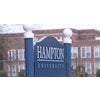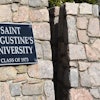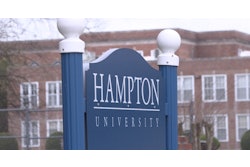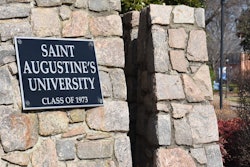A Mandate for More Students: HBCUs shore up their images in effort to boost enrollments
ELIZABETH CITY, N.C. — Pressured by the University of North Carolina Board of Governors to boost enrollments, the state’s five public historically Black universities are revising their images and crafting aggressive sales pitches to attract more students.
Officials at Fayetteville State University, where three out of four students are Black, are printing new brochures featuring White and Latino faces.
Officials at North Carolina Central in Durham are training more admissions officers, and at North Carolina A&T State University in Greensboro, they are rerouting the campus tour to show off the university’s most attractive features.
The University of North Carolina governors, who met last month at Elizabeth City State University, want the historically Black schools — along with University of North Carolina-Pembroke and Western Carolina University — to grow by nearly 50 percent by 2008.
The schools now account for 20 percent of the 16-campus UNC student population, but they hope to draw about 30 percent of the system’s expected enrollment boom.
UNC administrators say the campuses are underutilized and can work more efficiently if they grow substantially.
Last year, the General Assembly allocated $12 million to help the seven schools. The campuses are using the money to hire consultants, improve planning and budgeting, strengthen faculty development, improve academic advising and learn how to raise more private money. New niche academic programs are being considered.
After months of work with marketing and recruiting experts, the seven campuses are to develop detailed enrollment strategies by the end of June.
“It’s a challenge,” says Elizabeth City’s chancellor, Dr. Mickey Burnim. “It’s not going to be easy.”
Officials at Elizabeth City say their goal is to grow from 1,934 students in 1998 to 3,000 in 2008, a 55 percent leap in 10 years.
To help meet that goal, school officials are building new academic programs, advertising their 30 online courses and appealing to more adult learners of all races. Last month, the board approved new undergraduate degree programs in social work and marine science.
A key strategy for the Black colleges is to build relationships with younger students before they reach high school age.
Winston-Salem State has redesigned its honors program, Fayetteville State is touting its freshman experience initiative, and Central’s spring open house drew 1,000 potential students.
“We’re seeing the benefits already,” says Danny Green, Central’s enrollment manager.
Applications are up nearly 13 percent from last year at both Central and A&T, and 26 percent at both Elizabeth City and UNC-Pembroke, a tribal college in Robeson County.
Western Carolina, a predominantly White university, is hurt by its remote location in rural Jackson County. But a technology focus and its recent designation as a National Merit Scholarship sponsor already are drawing higher-caliber students.
Central’s chancellor, Dr. Julius Chambers, is optimistic that the dynamic recruiting will work, as long as voters approve this fall’s $3.1 billion bond issue for higher education facilities, to help the campuses implement badly needed renovations.
Despite the new efforts, however, some remain skeptical about the future of the Black colleges.
Last month, state Rep. Gene Arnold, R-Nash, introduced a bill to study the university system and the possibility of consolidating the historically Black institutions.
Alceste Pappas of Greenwich, Conn., a consultant working with Fayetteville State, Winston-Salem State and Western Carolina, says attracting students to the colleges is not enough. “We’re not just looking at ways to recruit them to the campus, but we’re looking at ways to retain them,” Pappas says. The universities will have to improve their basic services, from registration to billing to food service, she says.
—The Associated Press
© Copyright 2005 by DiverseEducation.com















